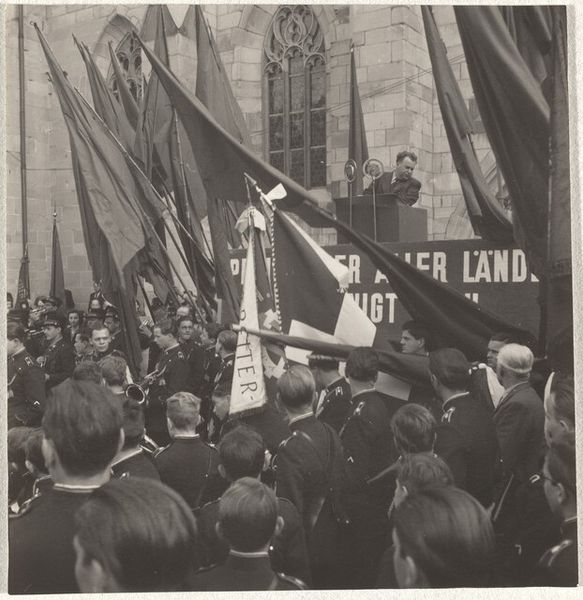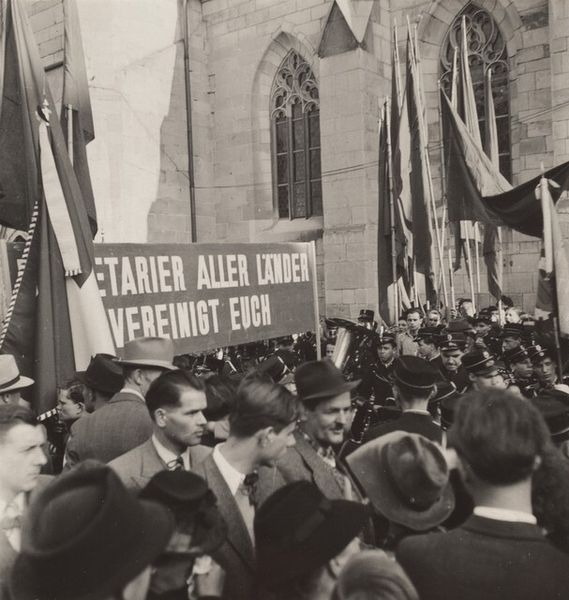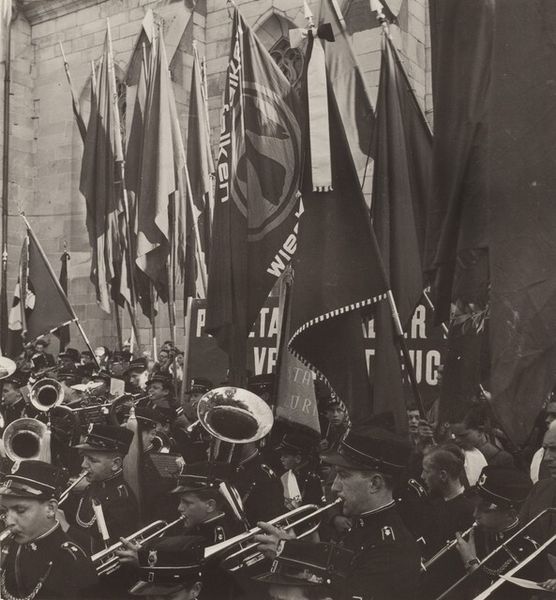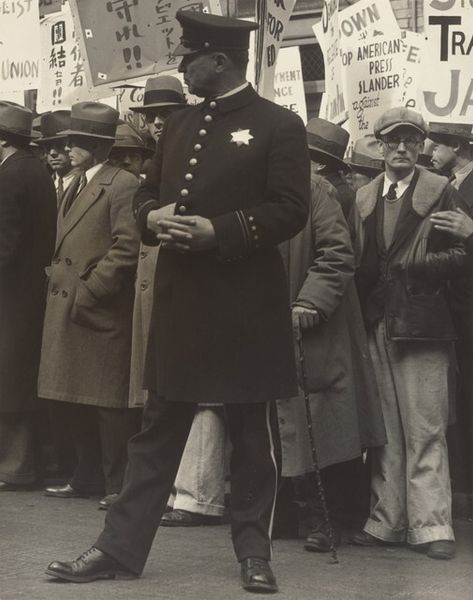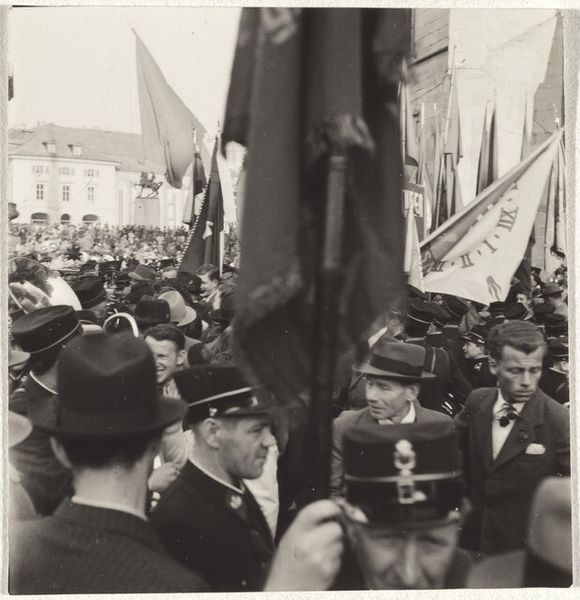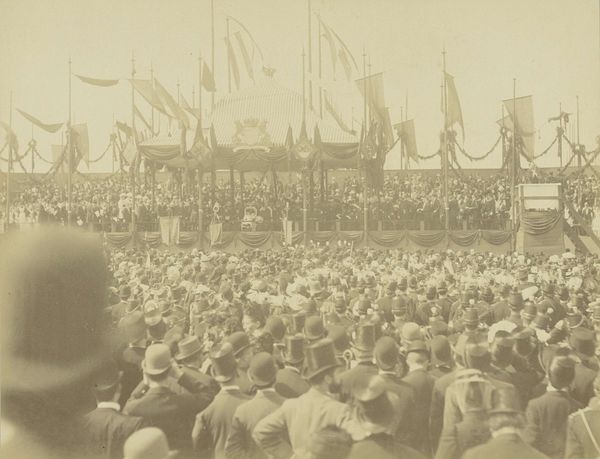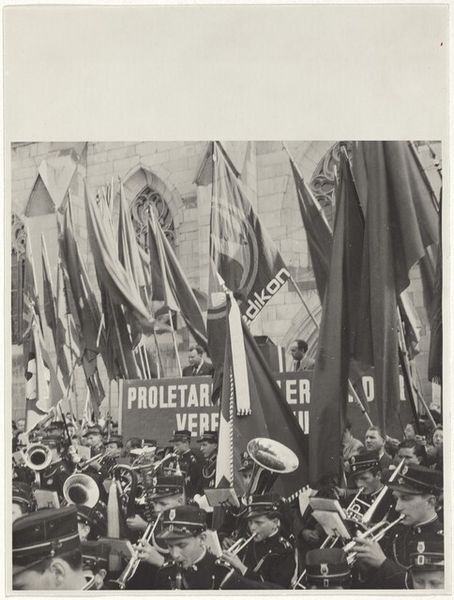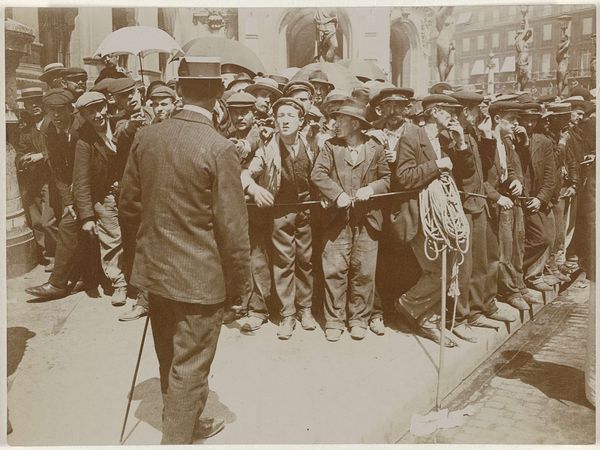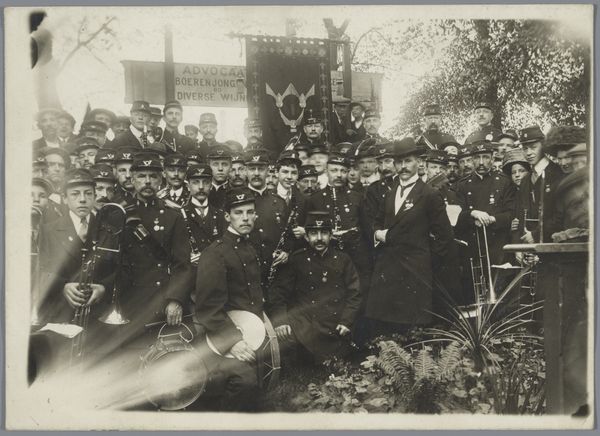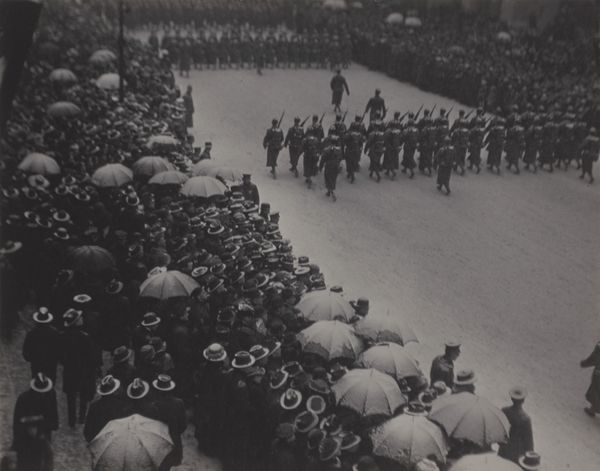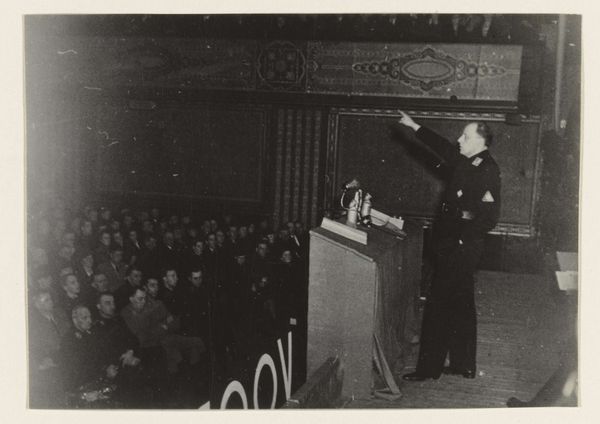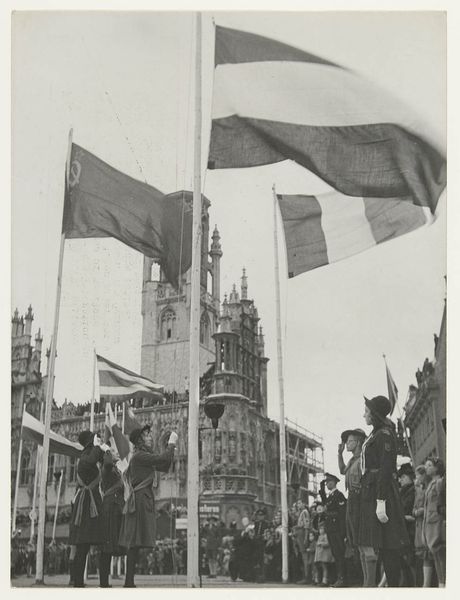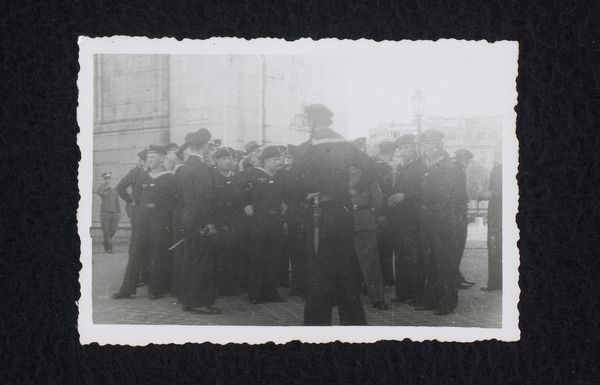
Dimensions: sheet (trimmed to image): 5.7 x 5.5 cm (2 1/4 x 2 3/16 in.)
Copyright: National Gallery of Art: CC0 1.0
Editor: This is Robert Frank’s “Zurich” from 1945. It looks to be a photograph, likely a print. The greyscale lends it such gravity and weight. All the hats in the crowd! It feels very structured. How do you interpret this work, focusing on its formal elements? Curator: Note the striking compositional contrast: the rigid verticality of the banners juxtaposed with the organic mass of figures below. Consider the way the photographer has structured the masses. What significance might we ascribe to this contrast, where horizontality intersects the vertical plane? Editor: It’s interesting, the upper half feels very organized, even stiff, with the repeated lines, versus the kind of ambiguous crowd at the bottom. I wonder, what is the photographer conveying here? Curator: Semiotically, these forms signify societal strata; this is echoed in the light, ranging from highlights in the building's architecture to the undifferentiated shadow amongst the participants. The lack of contrast contributes to a certain flattening of perspective and can evoke a sense of alienation and mass psychology. This speaks to the socio-political context it was captured in. Editor: So, you're suggesting that even in seemingly documentary photography, choices about composition and light underscore deeper meaning? Curator: Precisely. Every formal element—the graininess of the print, the tonal range, and the very arrangement of shapes—works together to communicate meaning beyond the immediately representational. Editor: It's fascinating how the photographer uses these tools to convey complex ideas! I will keep this in mind moving forward! Curator: Indeed. Such analyses invite one to think deeper about the relationship between form and meaning.
Comments
No comments
Be the first to comment and join the conversation on the ultimate creative platform.
